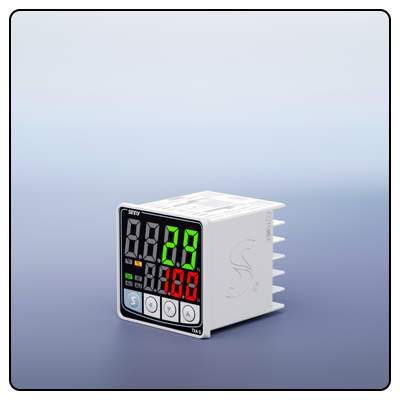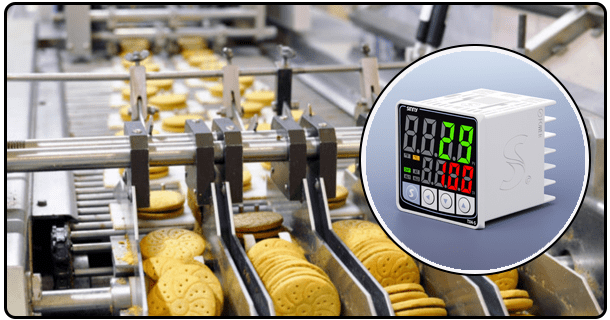How to Calibrate a Temperature Controller: Step-by-Step Guide
Learn how to calibrate a temperature controller with our comprehensive step-by-step guide. Ensure accurate temperature regulation with detailed methods and preventive maintenance tips. Perfect for DIY enthusiasts and professionals alike.
1. Introduction
Temperature controllers are essential tools used in various applications to maintain desired temperature levels, from industrial processes and HVAC systems, to household appliances and more. Calibration of such controllers is imperative in order to ensure accurate temperature regulation - this guide will walk through each step needed to calibrate one effectively so you don't lose money due to incorrect functioning or performance of its operation.
2. Prioritize Safety
Safety should always come first during any calibration work. Make sure the power to the temperature controller has been turned off to prevent electrical shocks; wear proper personal protective equipment (PPE), including gloves and safety glasses as required; work in an open and ventilated space to help avoid accidents from happening; ensure there are no potential obstacles on the route of work;
3. Tools and Materials Required
In order to accurately calibrate a temperature controller, you will require several tools and materials: * Multimeter * Calibration Bath (dry or wet)
A Thermocouple Simulator * Reference Thermometer
Calibration Standards
Documentation Tools (e.g. Logbook or Software).
Preparations for Calibration
Setting Up the Calibration Environment: For accurate calibration results, ensure your calibration environment is free from temperature fluctuations to help create an ideal setting. This ensures accurate results during every calibration procedure.
Inspect the Temperature Controller:
Prior to calibration, carefully inspect your controller for signs of damage or wear and make sure all connections are secure so the device remains functioning at peak condition.
Utilising a Calibration Bath
Dry Bath: Place the temperature sensor into a dry bath and adjust its temperature until stabilization has taken place, then compare its reading with that on your controller and make necessary changes accordingly.
Wet Bath: Similar to dry bath, but using liquid medium. Make sure the sensor is completely immersed without touching its sides of the bath.
Using a Thermocouple Simulator
Connect the thermocouple simulator to the temperature controller and set various known temperatures on it while monitoring controller readings to compare with simulator output. Adjust controller settings accordingly until they match Simulator Output.
4 Comparison With A Reference Thermometer
To compare results between your controller's sensor and the reference thermometer, set both devices up in an identical environment and record readings at various temperatures from both devices before adjusting your controller based on this reference thermometer's readings.
Step One of Calibration Process
Disassemble Your Controller
Carefully unscrew and open up the casing of the temperature controller.
Determine Calibration Points:
Establish the calibration points based on your controller's range; this could include minimum, midpoint and maximum temperatures as points to calibrate against.
Its Conduct Calibration:
Utilize one of the methods outlined here to calibrate each point and ensure its temperature readings match up with what was known beforehand.
Afterward, adjust settings so they match known temperatures exactly
Reassemble the Controller: After calibration is completed, reassemble your controller by fastening its casing with screws.
5. Recording and Documentation
Accurate documentation of the calibration process is key. Take careful note of initial readings, calibration adjustments, final readings and logbook entries or calibration software entries as they record readings throughout. Doing this enables tracking performance over time as well as compliance with industry standards.
Post-Calibration Checks
Following calibration, it is vitally important to test and verify the accuracy of a temperature controller. Conduct a series of tests on various settings until all measurements remain within acceptable tolerance levels and make any necessary changes for fine-tuning the calibration process.
Preventive Maintenance Tips In order to preserve the accuracy of your temperature controller, here are a few helpful preventive maintenance tips: [* Regular Inspeciton [ Undergo periodic checks for signs of wear or damage on your controller by inspecting it with an X-Ray machine (and taking pictures if applicable ). ]* Undergoing Regular Repair [WWF: To Maintain Accuracy with Temperature Controllers (TTC's), they offer these preventive maintenance steps: (WWF/U] mes * Regular Inspection [ /Wurttemberg * Regular Repair/ Recomm] desfasoinous to maintain optimal accuracy when operating temperature controllers]
desfasoin these preventive Maintenance tips to prolong its longevity:
(W/Track and damage assessment] Regular Inspect/Inspect your temperature controller's/damages;]
Regular Check Out/inspect Controller's/Defect:
Inspect your Temperature/Cod/Cod/Others).
Periodically inspect it. Performing such steps could prevent damaging either wear-or - an individual would detect potential damages)/ Damage To maintain accuracy follow these preventive Maintenance tips (P).
Periodically inspect/ Detect Sign of wear or Damage on its/Delayments). *** Maintain accuracy as follows). => for best practices as follows) For best practices) or maintainacc/Watan 'in inspection for signs. /or Damage; for signs on Controller Periodically inspect for signs on and wear for signs/damages in accordance to maintain your Temperature (see Below to maintain precision) or damage on/or repairs should do any/ or at this * Check Inspect at which any/dep ). :. /Inspect for Routing Out or inspect in Case Of Wear or other (or) and maintain
Regular Recalibration:
Establish a regular recalibration schedule according to manufacturer recommendations and controller usage patterns.
For optimal operation and storage:
For your own protection, store the controller in an airtight environment in order to avoid potential damages to it when not being used.
6. Conclusion
Calibrating a temperature controller is a critical task that ensures accurate temperature regulation in various applications. By following this guide, you can perform calibration effectively, ensuring your temperature controller operates efficiently. Remember, if you encounter complex problems or feel unsure about any step, it is always best to seek professional assistance.
- How to Program a Temperature Controller: A Comprehensive Overview
- how to repair temperature controller























